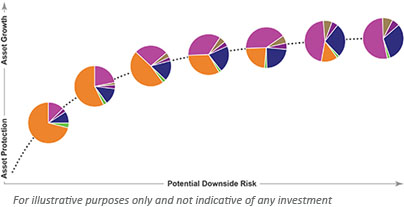
In a previous post, I showed how different asset classes correlate with one another and their effect on portfolio diversification. Meir Statman, Glenn Klimek professor of finance at Santa Clara University and a member of the Loring Ward Investment Committee, notes1 however, that return gaps between pairs of asset classes may be another way to measure their diversification benefit in a portfolio. Return gaps show the absolute value of the difference in cumulative returns between asset classes over a given time period. This measure considers not only correlation but the standard deviation2 of returns when determining the diversification benefits of an asset class. A look at return gaps against the S&P 500 over the 25-year-period from 1989 demonstrates the diversification benefits of various asset classes, with larger return gaps indicating more diversification benefit.
Continue reading
 Working with Dr. Harry Markowitz on the Loring Ward Investment Committee has taught me to never look at any type of change to a portfolio until I’ve done extensive mean variance optimization (MVO) work. However, there are about 100 different decisions you must make when running an MVO process and it starts with your input assumptions.
Working with Dr. Harry Markowitz on the Loring Ward Investment Committee has taught me to never look at any type of change to a portfolio until I’ve done extensive mean variance optimization (MVO) work. However, there are about 100 different decisions you must make when running an MVO process and it starts with your input assumptions.
You must be logged in to post a comment.